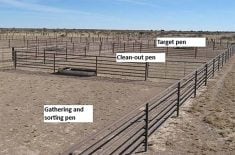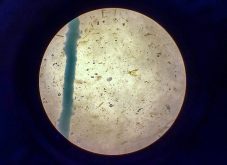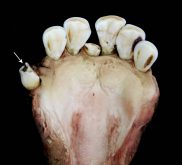The increasing interest in animal welfare means any products that can relieve pain, de-crease inflammation and reduce fever are welcome additions to the tools available to veterinarians to treat clinical disease.
They also may have a place in controlling post surgical pain or inflammation that might occur with castration or dehorning.
Better control of pain, inflammation and fever reduces stress and maintains appetite. It also helps calves recover more quickly and means they are less likely to contract conditions such as the respiratory disease complex.
Read Also

Breaking down successful winter feeding into six steps
It’s that time of year when it is important to start planning for a cow herd’s winter feeding program. Here are six steps I think are necessary to consider when getting your feed tested.
All non steroidal anti-inflammatory drugs are prescription medications so they must be prescribed by a veterinarian, who may incorporate them into treatment protocols to treat specific diseases on your farm.
There are three main groups of NSAIDS:
- Flunixine: Banamine was the original and now there are many generic trade names for the same thing.
- Ketoprofen: It is similar to human ibuprofen and has the trade name Anafen.
- Meloxicam: This product, which is sold under the trade name Meta-cam, has a huge market for treating small animal arthritis and is the most recent product to be approved in large animals.
Each of these products may be used for different reasons based on the veterinarian’s preference.
Metacam can be given either intravenously or subcutaneously and is effective for two to three days in cattle, which may have an advantage depending on when the patient has to be retreated.
The company that makes Bana-mine has combined it with the antibiotic floramphenical in the same product, calling it Resflor.
It did some research on this product and found good recoveries with less scarred lungs in pneumonia cases. This was a result of decreasing the inflammation in the lungs. Quicker recovery meant the antibiotic could work better so death loss and percentage of chronics was reduced.
Banamine by itself is approved only for intravenous use, but it can be given subcutaneously when used in Resflor.
Banamine lasts longer than one day and the antibiotic levels carry on for four days. It shows that one good shot of an anti-inflammatory helps economically. As well, there is often no need to repeat the treatment.
All these products must be administered at their recommended method according to the label. If not, we are guessing at their withdrawal or it may result in tissue damage.
Boehringer Ingelheim, which makes Metacam, looked at using the product on clinically affected scouring calves along with the standard scour treatments such as electrolytes. It found that the calves’ appetite was better, they recovered quicker and were less active.
Calves that weren’t treated with metacam weren’t nearly as content, probably because of uneasiness caused by gas pains or pain in general. As a result, the treated calves put more energy into getting better and recovered quicker.
One must make sure the patients are properly hydrated and have good urine flow because kidneys may be harmed in deydrated calves.
Boehringer Ingelheim also looked at the pain response from hot iron dehorning in young calves.
While the use of polled bulls in beef breeds is making dehorning less necessary, dairy breeds are pretty much straight horned.
Dehorning is still routine in young dairy calves and some strains of beef breeds, such as full French Charolais and Fleckvieh Simmental.
The study used readers that record pressure to elicit a pain response. The pressure pushing down around the dehorning site was recorded and the response was elicited with calves struggling or pulling back.
Researchers observed behaviour such as flicking of the ears, head shaking and head rubbing.
The calves were dehorned at the normal six to 12 weeks of age, and a significant reduction in pain re-sponses were noted.
Some were even given local anesthetic as well, but that wore off after a few hours and the Metacam took over.
The same principal applies to de-horning as with scouring calves: appetite will be maintained, calves will be less stressed, they will recover quicker and be less prone to getting sick.
This is a win-win situation and should return revenue to the producer, especially when considering the small amount of product used in these young calves.
Other researchers are looking at using NSAIDs when doing other painful procedures such as castration and branding.
Animal welfare is at the top of the list when it comes to the public’s vision of food production and food safety. With castration, the push is to do it at a younger age with a painkiller of some type.
Merck, which makes Banamine, has a study indicating that lameness is significantly reduced in feedlots with the medication, proving its place as a pain killer in a veterinarian’s repertoire of prescription medications.
To be adopted for routine procedures, painkillers must be effective, economical, easy to administer, long lasting and have no longer of a withdrawal than most of the antibiotics with which they are administered. These products definitely will fit the bill.
Although they cost money, the dose is small when using them for routine procedures on young calves. There may be a feed formulation, but administration by needle is still easy.
More pain medication will be given to cattle in the near future.
Although it does appease the animal welfare concerns, it also makes economic sense, increasing production and providing more animal welfare and hopefully less clinical disease.
We as veterinarians just need to think about how it should fit into our treatment protocols.















